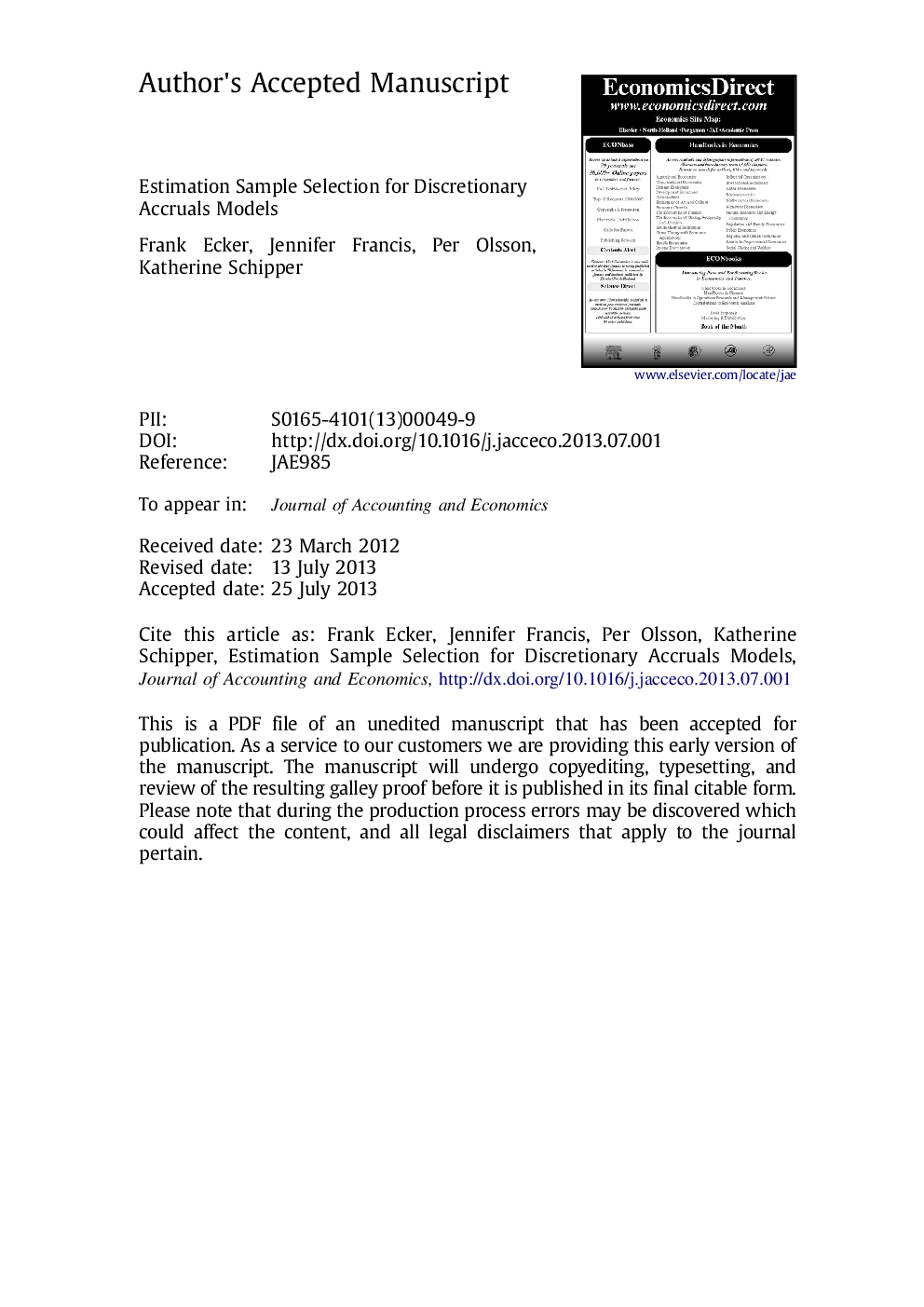| Article ID | Journal | Published Year | Pages | File Type |
|---|---|---|---|---|
| 5086749 | Journal of Accounting and Economics | 2013 | 50 Pages |
Abstract
We examine how the criteria for choosing estimation samples affect the ability to detect discretionary accruals, using several variants of the Jones (1991) model. Researchers commonly estimate accruals models in cross-section, and define the estimation sample as all firms in the same industry. We examine whether firm size performs at least as well as industry membership as the criterion for selecting estimation samples. For U.S. data, we find estimation samples based on similarity in lagged assets perform at least as well as estimation samples based on industry membership at detecting discretionary accruals, both in simulations with seeded accruals between 2% and 100% of total assets and in tests examining restatement data and AAER data. For non-U.S. data, we find industry-based estimation samples result in significant sample attrition and estimation samples based on lagged assets perform at least as well as estimation samples based on industry membership, both in simulations and in tests examining German restatement data, with substantially less sample attrition.
Related Topics
Social Sciences and Humanities
Business, Management and Accounting
Accounting
Authors
Frank Ecker, Jennifer Francis, Per Olsson, Katherine Schipper,
